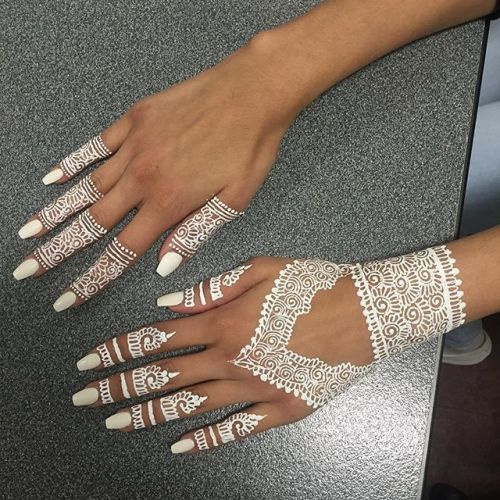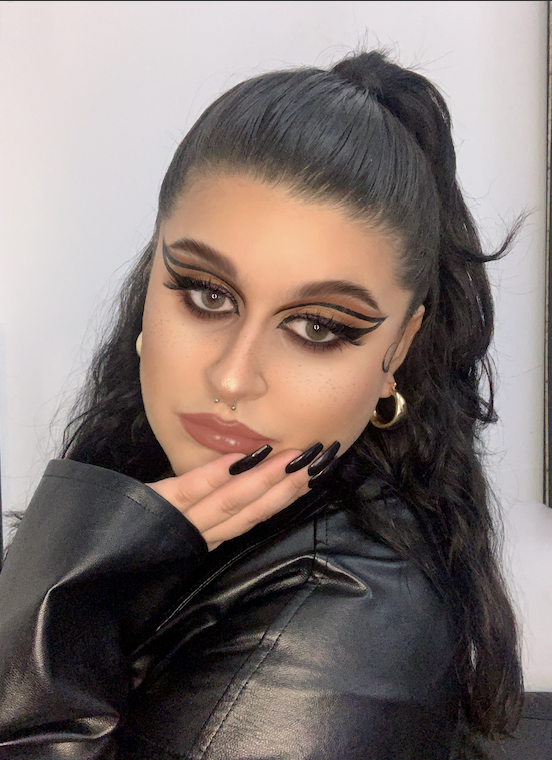You Will Defs Like these too
Life Video of The Day

Rund's Halloween Makeup TutorialOct.27.2020
New at The Modern East
Sign Up To Our Newsletter
[ninja_forms_display_form id=20]

Henna – the beautiful tattoo-like body art, most commonly found on hands and feet has made its mark in the beauty industry and is an everlasting tradition, but now that it is so commonly practiced all around the world, many have forgotten where it originated from and the initial value behind it.

Henna is actually a dye prepared from the plant Lawsonia Inermis, more commonly referred to as the henna tree, the mignonette tree, and the Egyptian privet. Apart from its historical use as a form of body art used to adorn the hands and feet of women during social holidays and celebrations since the late Bronze age in the eastern Mediterranean, It is also used as a form of hair dye, and recently, as a temporal substitute to eyebrow pencil or even as eyebrow embroidery – like a temporary tattoo!
Henna lasts about 1-3 weeks on average when applied to the skin, starting with a strong dark brown color for the first two weeks, then fading to a lighter rusty orange. Although, this can depend on both where you put the henna, and how often you tend to wash it. Even though the hands and feet may have the best result, that is where they usually fade the quickest through constant washing.
Like most dyes, the longer the henna paste is left on the skin, the more layers of skin cells are stained. You want as many layers of cells stains as possible for a darker, long-lasting color. One thing to keep in mind is that when you first remove the henna paste, the henna stain has not completely oxidized yet, so the stain starts off a light orange, but gets darker as you wait.
Historically, henna was used in the Arabian Peninsula, Indian subcontinent, the Middle East, and other parts of North Africa. Henna has been used since antiquity to dye skin, hair, and fingernails, as well as fabrics including silk, wool, and leather. The name is used in other skin and hair dyes, such as black henna and neutral henna, neither of which is derived from the henna plant, but has adapted to the name as they are used for the same purposes.
The earliest text mentioning henna is in the context of marriage and fertility celebrations and comes from an ancient legend referred to ‘The Ugaritic legend of Baal and Anath’, which has references to women marking themselves with henna in preparation to meet their husbands, and Anath adorning herself with henna to celebrate a victory over the enemies of Baal.
Many statuettes of young women dating between 1500 and 500 BCE along the Mediterranean coastlines have raised hands with markings consistent with henna. This early connection between young, fertile women and henna seems to be the origin of the Night of the Henna, which is now celebrated in all the middle east.

Henna was celebrated by most groups in the areas where henna grew naturally. It is commonly practiced in religion by Muslims, Sikhs, and others, all celebrated marriages, and weddings by adorning the bride, and sometimes the groom.
Henna was regarded as having Barakah (blessings) and was applied for luck as well as joy and beauty. Brides typically had the most henna, and the most complex patterns, to support their greatest joy and wishes for luck. Some bridal traditions were very complex, such as those in Yemen, where the bridal henna process took four or five days to complete, with multiple applications and resist work.
Henna is also practiced in other social celebrations, one of the most common being the celebratory Islamic holiday of Eid. There are two main celebrations of Muslims, Eid-ul-Fitr, and Eid-ul-Adha. Eid-ul-Fitr is celebrated at the end of the fasting month Ramadan as a gift from Allah and has a special significance for Muslims, hence the use of Henna to celebrate.

Photo Credits // getmehndidesigns
Nowadays, Henna has made its way across the globe, yet many still follow the traditions, accordingly, valuing the initial use of it. It is mostly used with the intent of social celebrations in Asia and the Middle East and North African region but is also used as a form of fashion and beauty – especially now that you can get designs done in different colors such as black and white rather than the original (but natural) shade of brown.
Also, commercially packaged henna, intended for use as a cosmetic hair dye, is available in many countries and is now popular in India, as well as the Middle East, but has also been made popular through culturalization in regions such as Europe, Australia, Canada, and the United States.

